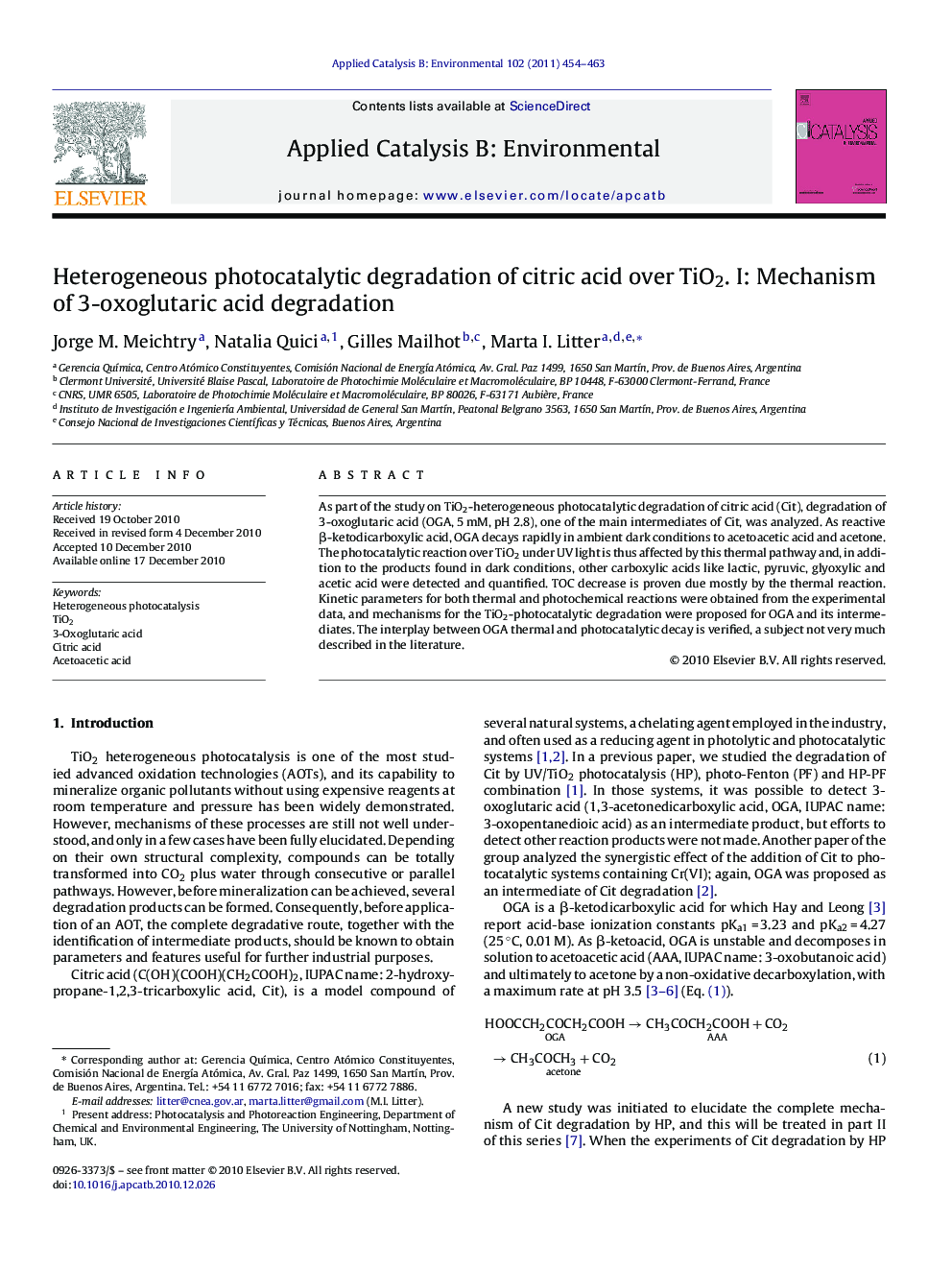| Article ID | Journal | Published Year | Pages | File Type |
|---|---|---|---|---|
| 47110 | Applied Catalysis B: Environmental | 2011 | 10 Pages |
As part of the study on TiO2-heterogeneous photocatalytic degradation of citric acid (Cit), degradation of 3-oxoglutaric acid (OGA, 5 mM, pH 2.8), one of the main intermediates of Cit, was analyzed. As reactive β-ketodicarboxylic acid, OGA decays rapidly in ambient dark conditions to acetoacetic acid and acetone. The photocatalytic reaction over TiO2 under UV light is thus affected by this thermal pathway and, in addition to the products found in dark conditions, other carboxylic acids like lactic, pyruvic, glyoxylic and acetic acid were detected and quantified. TOC decrease is proven due mostly by the thermal reaction. Kinetic parameters for both thermal and photochemical reactions were obtained from the experimental data, and mechanisms for the TiO2-photocatalytic degradation were proposed for OGA and its intermediates. The interplay between OGA thermal and photocatalytic decay is verified, a subject not very much described in the literature.
Graphical abstractFigure optionsDownload full-size imageDownload as PowerPoint slideResearch highlights▶ UV/TiO2 3-oxoglutaric acid degradation is affected by thermal and photocatalytic pathways. ▶ Acetoacetic acid and acetone are produced mainly by thermal degradation. ▶ Formation of lactic, pyruvic, glyoxylic and acetic acid indicates the occurrence of photocatalytic pathways. ▶ Photocatalytic reactions proceed mainly through photo-Kolbe mechanisms.
